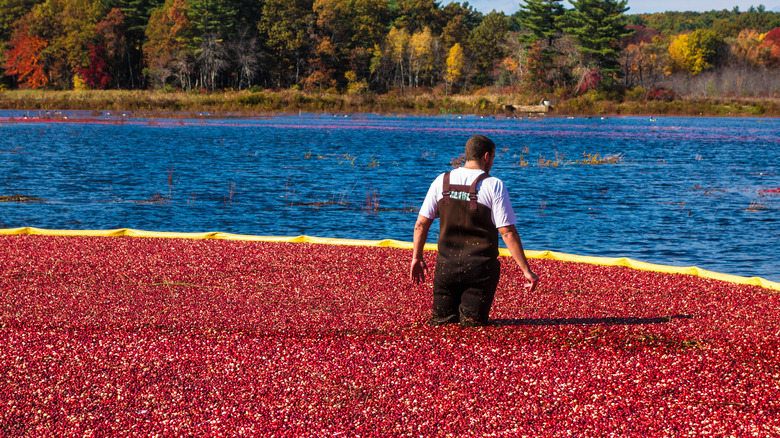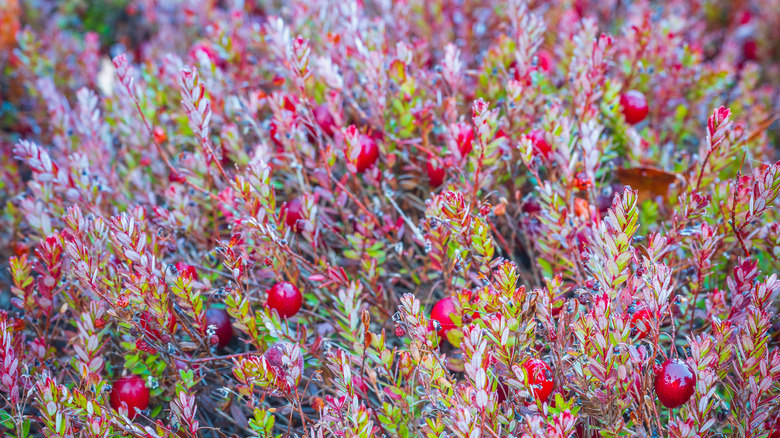The Cranberry Bog Misconception You Can Stop Believing
While cranberries grow in places as far as Chile and as near as New Jersey, there is perhaps no place on earth more well-known for growing this tart, peppy little fruit than the Commonwealth of Massachusetts. Seconded only by Wisconsin, Massachusetts cranked out two million barrels worth of cranberries in 2021 across its 14,000 acres worth of bogs (via USDA and Massachusetts Cranberries). All of the Commonwealth's cranberry bogs are tucked neatly in the southeastern corner of the state, with several on iconic Cape Cod.
Now, the phrase "cranberry bog" may conjure up images of that famous commercial from Ocean Spray where the two cranberry growers are standing, waist-deep, in what seems like a lake of cranberries. On the surface, this is completely innocent, clever marketing. However, the notion of cranberries' natural growing environment being wide pools of water is a misconception. Water plays an important part in cranberry production, but it is not, in fact where the cranberry actually grows.
Cranberries first grow in vine-laced bushes
The part of the cranberry growing season we're accustomed to seeing is what's known as wet harvesting. According to Massachusetts Cranberries, wet harvesting is a three-day process that involves flooding the cranberry bogs with water, allowing the fruit to float to the top, and then collecting the berries and loading them via pump or conveyor into trucks.
Cranberries themselves are perennial fruits that grow in low, vine-laced bushes. The bog is identified by its unique soil. An ideal cranberry bog is a mix of sand layered with organic matter, either in natural peat — like those on Cape Cod — or in yearly layers of decaying leaves covered by another layer of sand (via University of Massachusetts). Cranberries are also well-adapted to wetlands and can thrive in flooded soils. So while the imagery of cranberry lakes is iconic, the everyday work of the bog, layering itself year after year, is what ensures a continued crop of cranberries.

